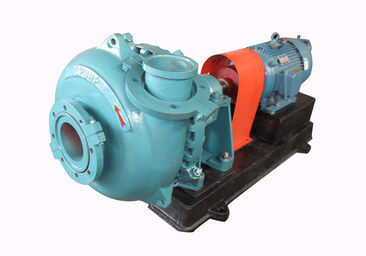Enhancing Efficiency: The Essential Role of Rubber Components in Pharmaceutical Pumps
Published:
Aug 27,2024
Classification:
Explore the crucial contribution of rubber components in the efficiency and effectiveness of pharmaceutical pumps. This comprehensive guide delves into the materials, performance benefits, and innovat

Enhancing Efficiency: The Essential Role of Rubber Components in Pharmaceutical Pumps
Table of Contents
1. Introduction to Pharmaceutical Pumps
2. Understanding Rubber Components in Pharmaceutical Applications
3. Types of Rubber Used in Pharmaceutical Pumps
4. The Importance of Material Selection
5. Performance Characteristics of Rubber Components
6. Innovations in Rubber Technology for Pharmaceutical Pumps
7. Addressing Challenges in Pharmaceutical Pump Design
8. Conclusion
9. Frequently Asked Questions (FAQs)
1. Introduction to Pharmaceutical Pumps
Pharmaceutical pumps play an integral role in the manufacturing and delivery of medications. These pumps are essential for transferring liquid products with precision and reliability, ensuring that patients receive the correct dosage. The efficiency of these systems directly impacts the overall productivity of pharmaceutical production lines, making it vital to enhance their effectiveness through innovative design and materials.
2. Understanding Rubber Components in Pharmaceutical Applications
Rubber components are critical in pharmaceutical pumps, acting as seals, gaskets, and diaphragms. Their main function is to contain and control the flow of liquids, preventing leaks and contamination. The selection of appropriate rubber materials is crucial as it affects pump performance, durability, and compliance with regulatory standards.
2.1 The Role of Seals and Gaskets
Seals and gaskets made from rubber are essential for ensuring airtight and leak-proof connections in pharmaceutical pumps. They maintain the integrity of the pump system, which is vital in applications involving sensitive compounds and sterile environments.
2.2 Diaphragms in Pharmaceutical Pumps
Diaphragms, often made from specialized rubber compounds, are used in peristaltic pumps and diaphragm pumps. They facilitate fluid movement while isolating the liquid from pump mechanisms, ensuring that the product remains uncontaminated.
3. Types of Rubber Used in Pharmaceutical Pumps
A variety of rubber materials are utilized in the construction of components for pharmaceutical pumps, each with unique properties and benefits. The most common types include:
3.1 Ethylene Propylene Diene Monomer (EPDM)
EPDM rubber is known for its excellent resistance to heat, ozone, and aging. Its flexibility and durability make it a popular choice for seals and gaskets in pharmaceutical applications.
3.2 Silicone Rubber
Silicone rubber is prized for its biocompatibility and ability to withstand high temperatures. It is often used in applications requiring sterilization, as it can endure repeated cycles without degrading.
3.3 Nitrile Rubber (Buna-N)
Nitrile rubber is resistant to oils and fuels, making it suitable for pumps that handle viscous or oily substances. Its toughness and wear resistance contribute to its longevity in challenging environments.
4. The Importance of Material Selection
Selecting the right rubber material is a critical factor in the operational efficiency of pharmaceutical pumps. The material must not only be compatible with the substances being pumped but also adhere to stringent health and safety regulations. Several considerations come into play:
4.1 Chemical Compatibility
Different pharmaceutical substances can react adversely with certain rubber materials. An understanding of chemical compatibility ensures that the chosen rubber does not degrade, which could lead to contamination or failure.
4.2 Compliance with Regulatory Standards
Pharmaceutical pumps must meet various regulatory requirements, including FDA compliance. Using materials that have been validated for pharmaceutical use is essential for maintaining product integrity and safety.
5. Performance Characteristics of Rubber Components
The performance of rubber components significantly impacts the functionality of pharmaceutical pumps. Key characteristics include:
5.1 Elasticity and Flexibility
Rubber components must maintain their shape and function under pressure, exhibiting excellent elasticity and flexibility. This ensures effective sealing and prevents leaks, even under varying operational conditions.
5.2 Durability and Wear Resistance
Given the demanding nature of pharmaceutical production, rubber materials must exhibit high levels of durability and wear resistance. This extends the lifespan of components and reduces the frequency of maintenance.
5.3 Temperature Resistance
Pharmaceutical processes often involve varying temperatures. Rubber components must withstand these changes without compromising their integrity or performance.
6. Innovations in Rubber Technology for Pharmaceutical Pumps
Advancements in rubber technology are continually enhancing the performance and efficiency of pharmaceutical pumps. Innovative approaches include:
6.1 Advanced Compounding Techniques
The development of specialized rubber compounds that incorporate additives to enhance properties such as chemical resistance and mechanical strength is revolutionizing the design of pump components.
6.2 3D Printing of Rubber Components
3D printing technology is being utilized to create custom rubber parts with complex geometries. This innovation reduces lead times and allows for more precise component manufacturing.
6.3 Smart Rubber Materials
The introduction of smart materials that can respond to environmental changes is paving the way for more efficient pump systems. These materials can adapt their properties based on temperature or pressure, ensuring optimal performance.
7. Addressing Challenges in Pharmaceutical Pump Design
The design of pharmaceutical pumps comes with unique challenges that must be addressed to enhance efficiency:
7.1 Contamination Prevention
Ensuring that rubber components do not leach harmful substances into pharmaceuticals is critical. Employing high-quality, validated materials minimizes contamination risks.
7.2 Cost-Effectiveness
Balancing performance with cost is essential in pharmaceutical manufacturing. Investing in high-quality rubber components can lead to long-term savings by reducing maintenance and downtime.
7.3 Sustainability Concerns
The pharmaceutical industry is increasingly focused on sustainability. The use of eco-friendly rubber materials and manufacturing processes can contribute to a more sustainable production cycle.
8. Conclusion
Rubber components are integral to the efficiency and reliability of pharmaceutical pumps. By understanding the various types of rubber, their performance characteristics, and the innovations in rubber technology, manufacturers can enhance their production processes. This focus on quality and efficiency not only benefits the manufacturers but also ensures that patients receive safe and effective medications.
9. Frequently Asked Questions (FAQs)
1. What types of rubber are most commonly used in pharmaceutical pumps?
The most common types of rubber used in pharmaceutical pumps include EPDM, silicone rubber, and nitrile rubber. Each has unique properties that make them suitable for specific applications.
2. How do rubber components affect the efficiency of pharmaceutical pumps?
Rubber components are essential for creating seals and diaphragms that prevent leaks and contamination, thereby ensuring accurate dosing and operational efficiency.
3. What are the key factors to consider when selecting rubber materials for pharmaceutical applications?
Key factors include chemical compatibility, temperature resistance, durability, and compliance with regulatory standards.
4. How does innovation in rubber technology impact pharmaceutical manufacturing?
Innovations in rubber technology, such as advanced compounding and 3D printing, enhance the performance, efficiency, and sustainability of pharmaceutical pumps.
5. Why is contamination prevention critical in pharmaceutical pump design?
Contamination prevention is vital to ensuring that medications remain safe and effective for patients, avoiding adverse health effects caused by harmful substances leaching from components.
By focusing on the pivotal role of rubber components in pharmaceutical pumps and continuously innovating, the pharmaceutical industry can enhance its operational efficiency, ultimately benefiting patient care and safety.





